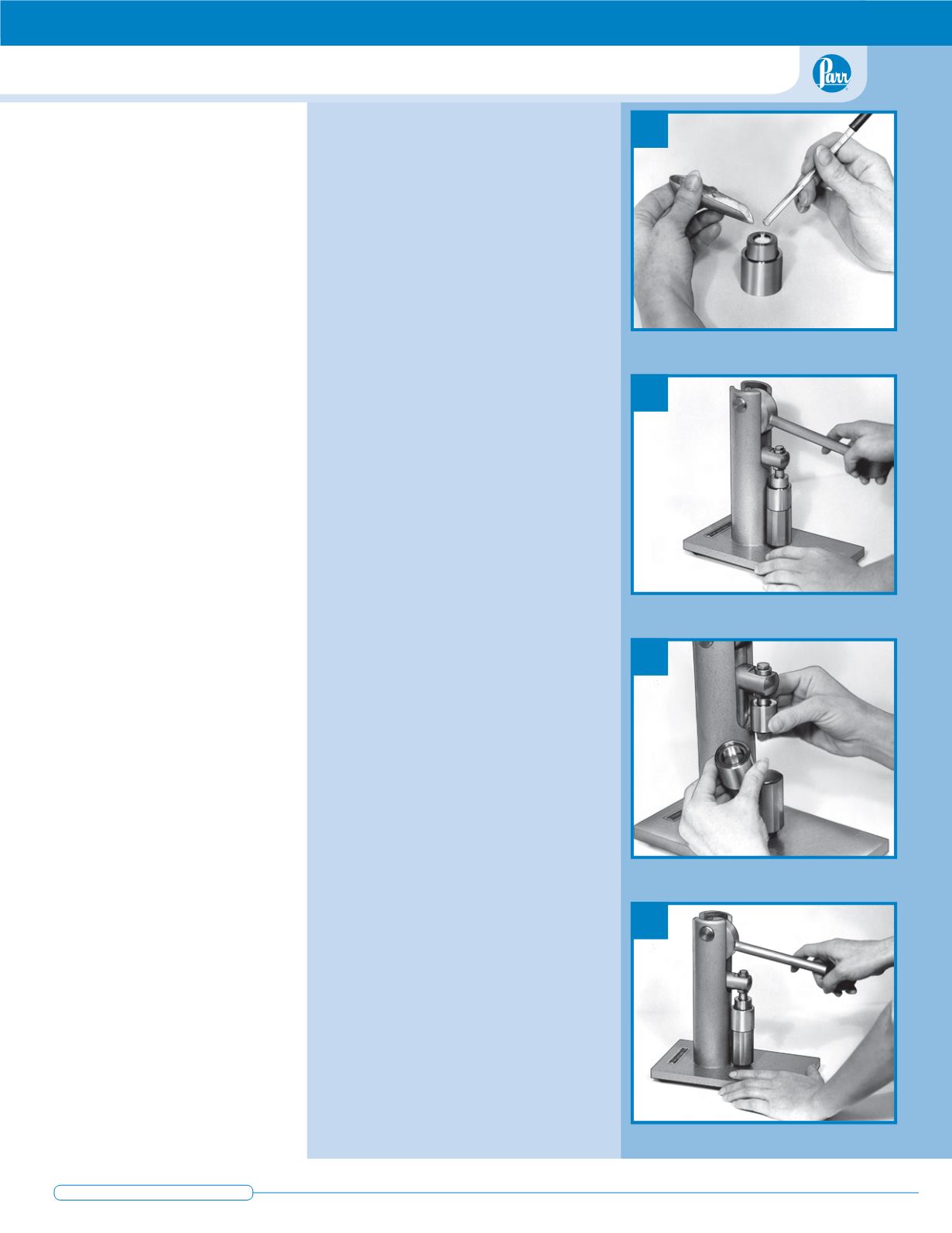
lower the die makes it pos-
sible to produce pellets of any
desired thickness using the
maximum force of the press.
When compressing light or
fluffy materials the die can be
raised after successive punch
strokes to compensate for the
reduction in the volume of
the charge. The variable anvil
setting can also be used as a
means for adjusting the amount
of pressure applied to a pellet.
If duplicate pellets of equal den-
sity are desired, these can be
made by using equal amounts
of sample and leaving the anvil
at a fixed setting while taking
the punch through its full stroke
when forming each pellet.
Construction Features
The Parr pellet press is
sturdily constructed with its
parts arranged so that they can
be easily cleaned and main-
tained in good working order.
Punches, dies and die plugs in
1/4, 3/8 and 1/2 inch sizes are
made of polished T-303 stain-
less steel. Any of these indi-
vidual parts can be replaced
if they become worn or dam-
aged, but for the best perfor-
mance it is recommended that
they be purchased and used in
sets. Punches and dies in 1/8
inch and small metric sizes are
made of 17-4PH stainless steel.
These parts are heat treated
for added strength and hard-
ness, which gives the metal a
characteristic dark color but
does not alter its corrosion
resistance. Punches and dies in
these small sizes are sold only
in matched sets.
Pellet Making With A
Parr Pellet Press
In four easy steps:
1. Fill the die.
Set the die and its
holder on the base of the press
with the beveled edge of the die
resting on the flat surface in the
reversible holder. Pour the charge
into the die cavity and tamp with
a stirring rod, if necessary.
2. Compress the charge.
Transfer
the die and its holder to the press
and push the lever down to
compress the charge. To obtain
maximum compression, the lever
should require a firm push as
it moves through its full stroke.
If a full stroke is not obtained,
turn the anvil to lower the die
until the full mechanical advan-
tage of the press can be utilized.
Conversely, if the lever moves
through its full stroke without
encountering sufficient resistance,
raise the die until firm compres-
sion can be applied.
3. Reverse the die holder.
Raise
the lever and slide the die and its
holder out of the press. Reverse
the holder to bring the deep
cavity under the die and return
the parts to their original position.
The clearance under the punch
will be limited when making thin
pellets. In such cases it will be
more convenient to grasp the die
with one hand and slide it upward
on the punch, holding it in that
position while reversing the die
holder with the other hand.
4. Eject the pellet.
Bring the lever
down gently to eject the pellet
into the cavity in the holder. If a
thick pellet is not ejected by this
stroke, turn the anvil to raise the
die. The pellet will then drop
out freely. Remove the pellet with
tweezers or forceps; reverse the
holder and repeat the cycle if
additional pellets are required.
2
1
3
4
P a r r I n s t r u m e n t C o m p a n y
1 - 8 0 0 - 8 7 2 - 7 7 2 0


